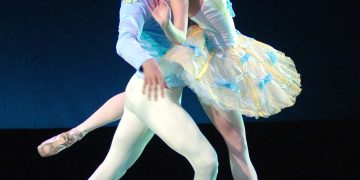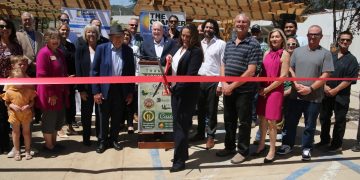
Mission Hills Heritage presents a lecture on these unsung geniuses of domestic design
It’s called ratiocination, and it’s a familiar mental process for anyone who’s ever stared at some mysterious piece of his or her old house and thought, “If I just keep looking at this long enough, it will all make sense.”
Edgar Allen Poe used the word to describe the rational reasoning of his detective in Murder at the Rue Morgue. Arthur Conan Doyle and other writers borrowed the concept to create the modern detective story. You can see ratiocination at work in the latest Sherlock Holmes movie—it involves a lot of flash cuts and a hyperactive voiceover, some mathematics, physics, Eastern philosophy, astral projection and the slowing of time, followed by rapid-fire fisticuffs. Elementary. My. Dear. Watson. Bim! Bam! Boof!
Ratiocination has become such a part of our popular culture that now everybody’s doing it—from Gossip Girl to The Girl With the Dragon Tattoo. You can do it on the computer, you can do it on your hand-held mobile device, you can do it while meditatively balancing an idling power tool in your hand and looking at your crown molding and thinking, “I wonder if this could be original?”
Of course, most old house owners would rather not ratiocinate. We wish a nice old lady would pull up in front of our house with photographs of the living room from 1914—“That’s me, sonny, playing by the fireplace with my miniature pony!” But that sort of thing only happens in our dreams. In real life, we’ve got to make do with investigation, intuition and a little jujitsu.
Fortunately, every once and a while amateur history detectives do catch a break. On Jan. 21, Mission Hills Heritage’s annual lecture series will focus on master builders—those unsung heroes who constructed most of the houses built in San Diego prior to World War II, including, probably, yours. Ralph Hurlburt, Morris B. Irvin, Nathan Rigdon and Martin V. Melhorn are the unsung and all-but-unknown visionaries who shaped our urban landscape 80 or 90 years ago. You may not have the documents to link any of these 40-some master builders to your humble abode, but with some deductive reasoning and a boatload of photographs (which you’ll find at the lecture), you just might make the mental connection. Sherlock Holmes has done more with less.
In a sense, the master builders have something in common with the master criminals: they all have signatures—tells, reveals, quirks, traces of dust from a seldom-traveled road in Calcutta that just happen to be lightly sprinkled on their brogans. Put these architectural clues together, and you have solved the mystery of your house’s provenance almost as certainly as if Professor Moriarty turned up in your attic with an armload of house plans.
Unlike San Diego’s master architects—licensed and trained professionals like Richard Requa, Homer Delawie, Lillian Rice and Irving Gill—not a lot is known about the master builders, who left behind fewer traces, and who were, until recently, held in less regard as designers. However, the evidence points to a fundamental understanding of the basic tenets of classic architectural design, particularly in the case of Nathan Rigdon, who seemed to have drawn his house plans with Andrea Palladio’s Four Books of Architecture open on his desk. According to Palladio, who has been required reading for aspiring architects from Thomas Jefferson to Frank Lloyd Wright, the Romans were very precise in their requirements regarding ornamentation and proportion, and, without going into numbing detail, the evidence shows that Rigdon had the basics down.
“Most of the master builders were well-versed in the area of design,” says Mission Hills resident Barry Hager, who will be delivering the lecture on Nathan Rigdon. “It doesn’t seem they were educated as architects. Not in the formal sense. I think they really learned their craft the old fashioned way, through working for others.”
Rigdon was the progenitor of the “Mission Hills Box,” a two story stucco-sided Prairie-style house with classical detailing and some intense woodwork in the living, dining and music rooms. You’ll find examples along Mission Hills’s major avenues, as well as Rigdon-built single-story bungalows with wide eaves and classical pillars in front. A few examples to consider: 1770 and 1752 West Lewis; 1800, 1802, 2206 and 1834 Fort Stockton; 2215 and 2225 Pine St.; 4240 and 4250 Arguello Way. Google them, and you’ll detect a pattern emerging.
When we spoke recently, Hager’s lecture was still a work in progress, but he revealed the basic outline: Beginning in 1909, Rigdon built at least 100 houses in Mission Hills, many in partnership with Morris B. Irvin. (He built commercial buildings as well, including the Montclaire at 1605-33 West Lewis.) Rigdon was born in Harford Maryland, in 1867, lived for a while in Colorado, spent about 12 or 13 years in San Diego, moved on to Glendale in 1920 to build more houses, and died there, in 1939. He had a son, and a wife named Hattie.
What seems to be missing is the question of character: what kind of a guy was Rigdon?
“He was a pious man,” says Hager. “He was an ordained minister, and he served on the board of his Methodist church, both here and in Glendale.” His houses were somewhat pious as well. “He built very practical houses. Large living rooms and parlors, four bedrooms upstairs. Maybe that’s why so many still exist. They’re very utilitarian in design, but beautiful too. Beautiful in their simplicity.”
The 2012 Mission Hills Heritage Lecture on San Diego’s master builders takes place Saturday, Jan. 21, from 1 to 4 p.m. at Francis Parker Lower School. Historian Ron May will also give a presentation on master builder Marvin V. Melhorn, whom he describes as “a genius of finance and design.” For more information see missionhillsheritage.org. For a list of San Diego’s master builders and architects, see sandiego.gov.













Discussion about this post